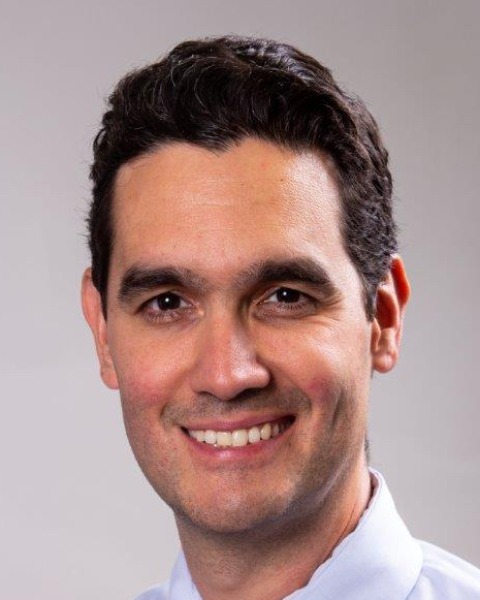Back
Poster, Podium & Video Sessions
Moderated Poster
MP17: Pediatric Urology: Upper & Lower Urinary Tract
MP17-16: Long-Term Outcomes for Patients with Anaplastic Bilateral Wilms Tumors enrolled on COG AREN0534
Friday, May 13, 2022
4:30 PM – 5:45 PM
Location: Room 225
Rodrigo LP Romao*, Halifax, Canada, Jennifer H Aldrink, Columbus, OH, Brett Tornwall, Gainesville, FL, Kathleen Kieran, Seattle, WA, Andrew Murphy, Andrew Davidoff, Memphis, TN, Daniel Benedetti, Nashville, TN, Jeffrey Dome, Washington DC, DC, Elizabeth Perlman, Chicago, IL, Ethan Smith, Cincinnati, OH, Conrad Fernandez, Halifax, Canada, James Geller, Cincinnati, OH, Jack Brzezinski, Toronto, Canada, Lindsay Renfro, Monrovia, CA, Marcus Malek, Pittsburgh, PA, David Mansur, Cleveland, OH, Elizabeth Mullen, Boston, MA, Nicholas Cost, Denver, CO, Robert C Shamberger, Boston, MA, Peter F Ehrlich, Ann Arbor, MI

Rodrigo Romao, MD
IWK Health, Dalhousie University
Poster Presenter(s)
Introduction: Anaplastic histology in the setting of bilateral Wilms tumor (BWT) is associated with poor prognosis - NWTS-5 4-year EFS and OS were 43.8% and 55.2%, respectively. AREN0534 sought to improve outcomes for BWT. We analyzed the events and long-term outcomes for the rare subgroup of patients with BWT and anaplasia.
Methods: AREN0534 was open to enrollment from 2009 to 2015. Patients with focal(FA) or diffuse(DA) anaplasia were included in this sub-analysis. Location of relapse, progression and 7-year EFS and OS with 95% CI are reported.
Results: There were 25 patients with anaplastic BWT (17 DA and 8 with FA). 1/8 patients with FA had bilateral FA and 4/17 patients with DA had bilateral DA. There were 18 females and 7 males; median age of enrollment was 43.1 months (24.1- 113.7). For FA, 7-year EFS was 62.5%(95% CI, 24.99-100) and OS was 87.5%(95% CI, 62.8-100). One patient with FA died from local relapse due to FHWT in the contralateral kidney at 5 years off therapy. A second patient with stage II FA had progressive disease while on therapy. This patient did not have nodes sampled. Pathology at progression was DA. For DA, 7-year EFS was 58.8% (95% CI, 25.7-91.9) and OS was 70.1% (95% CI, 36.5-100). 7 patients had events, 3 with local tumor progression (all died) and 4 with relapse (2 died). All 4 relapses had initial positive surgical margins and occurred within a year of ending therapy. The sites of relapse were local (2), and lung only (2). Of the 10 patients who were without an event, 5 had positive margins.
Conclusions: Patients with BWT and anaplasia often have discordant pathology. Late events are rare. Margin status at the time of definitive surgery does not seem to impact outcomes in the context of contemporary multimodal therapy including radiation to positive margins.
Source of Funding: This project was supported by grants CA98543 (Children’s Oncology Group Chair’s grant) and CA98413 (COG SDC grant) from the National Institutes of Health. U10CA180899
Methods: AREN0534 was open to enrollment from 2009 to 2015. Patients with focal(FA) or diffuse(DA) anaplasia were included in this sub-analysis. Location of relapse, progression and 7-year EFS and OS with 95% CI are reported.
Results: There were 25 patients with anaplastic BWT (17 DA and 8 with FA). 1/8 patients with FA had bilateral FA and 4/17 patients with DA had bilateral DA. There were 18 females and 7 males; median age of enrollment was 43.1 months (24.1- 113.7). For FA, 7-year EFS was 62.5%(95% CI, 24.99-100) and OS was 87.5%(95% CI, 62.8-100). One patient with FA died from local relapse due to FHWT in the contralateral kidney at 5 years off therapy. A second patient with stage II FA had progressive disease while on therapy. This patient did not have nodes sampled. Pathology at progression was DA. For DA, 7-year EFS was 58.8% (95% CI, 25.7-91.9) and OS was 70.1% (95% CI, 36.5-100). 7 patients had events, 3 with local tumor progression (all died) and 4 with relapse (2 died). All 4 relapses had initial positive surgical margins and occurred within a year of ending therapy. The sites of relapse were local (2), and lung only (2). Of the 10 patients who were without an event, 5 had positive margins.
Conclusions: Patients with BWT and anaplasia often have discordant pathology. Late events are rare. Margin status at the time of definitive surgery does not seem to impact outcomes in the context of contemporary multimodal therapy including radiation to positive margins.
Source of Funding: This project was supported by grants CA98543 (Children’s Oncology Group Chair’s grant) and CA98413 (COG SDC grant) from the National Institutes of Health. U10CA180899

.jpg)
.jpg)